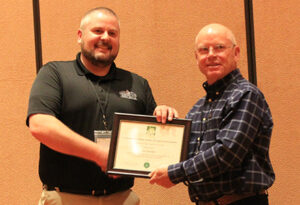
CSFS Staff Recognized for Outstanding Work
The Colorado-Wyoming Society of American Foresters met in Loveland, Colo., on March 21, 2024, and three CSFS employees received awards for their achievements in forestry.
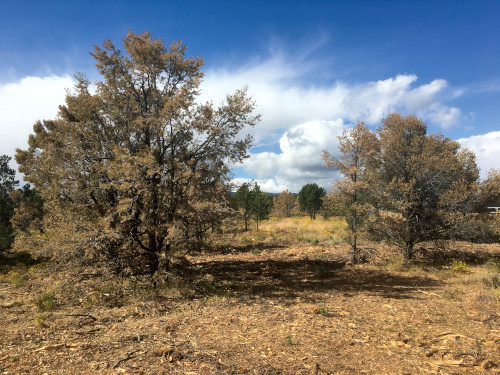
Counties most impacted in southeast Colorado in 2022: Huerfano, Las Animas, Pueblo
A combination of dense forests and ongoing drought continues to create ideal conditions for the piñon Ips beetle (Ips confusus) to spread at concerning levels in areas of southeast Colorado. In other words, there is plenty of food for the beetles and drought-stressed trees lack the defenses to ward off attack.
This beetle is especially active in central Huerfano County north of Highway 160 where infestations are widespread and expanding. Other areas of concern for piñon Ips beetle include piñon-juniper forests in Las Animas and Pueblo counties.
If left unchecked, outbreaks can kill wide swaths of host trees, which can significantly alter the makeup of piñon-juniper and ponderosa pine forests. Bark beetles like piñon Ips can also leave large amounts of dead trees in their wake that act as fuel that may increase the intensity and impact of wildfires.
Colorado State Forest Service foresters continue to provide science-based strategies and education to landowners to help them manage their forests for piñon Ips beetle. Freshly cut piñon trees create ideal breeding sites for this native beetle, so landowners should prune piñon trees from November to February, when the beetles are not active, and properly dispose of the slash and cut wood. Learn how to dispose of slash and wood in the Piñon Ips Bark Beetle Quick Guide.
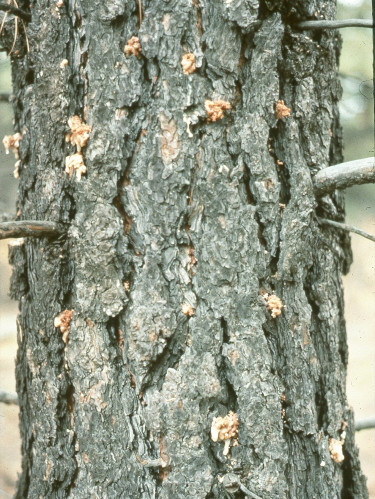
Trees in southeast Colorado could use a lot more rain and snow – not just for a season, but for several consecutive years. That is what it is going to take for trees in this part of the state to recover from years of prolonged drought conditions. A lack of precipitation can kill trees or predispose them to a host of health issues, including western spruce budworm and bark beetle attacks.
This problem is not unique to this area of Colorado, but drought stress is so prevalent that it rises to the top of forest health issues for this part of the state. Colorado State Forest Service foresters have long monitored the impacts of drought in forests in the backcountry, and they now see its effects in trees growing in lower-elevation, urban and riparian areas of southeast Colorado as well.
To address this issue, CSFS foresters work with landowners and partners to remove unhealthy trees from dense stands to reduce competition for resources among remaining trees. Thinning forests in and around communities and critical watersheds can spur individual tree vigor and overall forest health and resiliency, while reducing fuels and lessening the potential impacts of a wildfire.
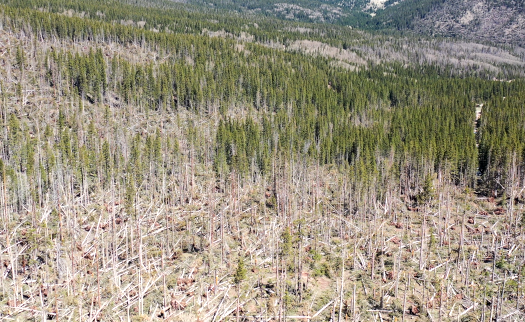
Counties most impacted in southeast Colorado in 2022: Costilla, Huerfano, Las Animas
Severe winds occurred in April and May 2022, leaving approximately 800 acres of windthrow within the high-elevation Engelmann spruce-fir forests of the Cucharas River and Purgatoire River headwaters. Costilla, Huerfano and Las Animas counties recorded approximately 1,260 acres affected in total, specifically around the Bear and Blue Lake campgrounds in the Upper Cucharas River watershed.
Windthrow areas such as these offer yet another avenue for forest pests to take hold. More food for bark beetles is available in the down trees, which cannot ward off attack like live trees. Spruce beetle is currently active in the vicinity of these wind-driven, uprooted trees, setting the stage for heightened potential of spruce and other bark beetles to increase populations in the coming years.

The Colorado-Wyoming Society of American Foresters met in Loveland, Colo., on March 21, 2024, and three CSFS employees received awards for their achievements in forestry.
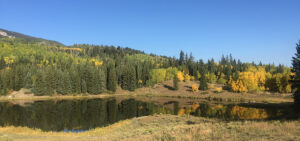
CSFS foresters spend a lot of time in Colorado’s forests, so they’re the best sources for insider tips on where to view fall colors. See if you agree with their suggestions!
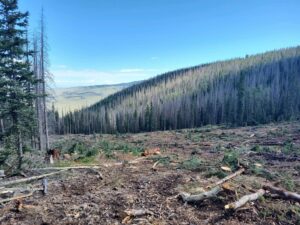
Foresters from the CSFS and the Bureau of Land Management collaborated on a plan to reduce wildfire risk for Waugh Mountain in northwestern Fremont County.